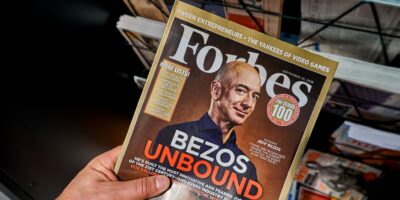Targeted Tax Incentives: Perverse and Ineffective
State and local governments use targeted tax incentives in an attempt to create jobs and stimulate economic growth. Targeted tax incentives include job-development and retraining tax credits, tax abatements, infrastructure financing, or, in some cases, outright grants and loans of public funds. State and local officials use targeted incentives to attract a private firm to their state, help support or expand an existing business, or prevent a company from relocating to another location. While these policies are common among state and local governments, many scholars have repeatedly questioned their efficacy. Besides not achieving the stated goals, these incentive programs encourage behavior that may lead to a host of perverse and unintended consequences.
If the efficacy associated with these types of policies is in serious doubt, one wonders, why are they so popular with governments? The answer is that businesses engage in rent-seeking behavior, employing resources to lobby for tax breaks and other subsidies that add to their profits. This lobbying creates a bidding war between two or more states that can increase the value of the incentives and rents firms can extract from the governments. Economist William Baumol (1990) argues that individuals choose to devote their entrepreneurial efforts toward either wealth creation or wealth redistribution.
Industries seeking preferential treatment dominate the political process because taxpayers have very little incentive to be well-informed about the costs associated with these tax-incentive programs and to create organized opposition. The jobs created at a new plant are easily visible to the state or local community; the community members do not see the jobs that are lost elsewhere in the economy because of the higher tax burdens imposed on other businesses and consumers. Nor do they see the scarce resources that this political process is allocating away from productive ventures that could produce real output and growth that firms are instead spending on lobbying politicians to obtain these favors. In addition, taxpayers may be unable to see that their future tax bills will be higher in order to service the public debt issued to finance the subsidies to politically influential private companies (Hicks and Shughart 2007). All the while, politicians receive the benefit of claiming they created jobs, supported business, and helped generate economic growth. This wins them votes come election time.
Incentives Cannot Turn a Moose Into a Camel
Firm site consultants are aware that they must first meet certain fundamental criteria for their industry to make a successful location decision. They often place tax incentives at the bottom of the list. Thus, firms identify locations for sites considering industry-specific resource needs and availability. Tax incentives cannot create these criteria for these industries. Incentives will not overcome the lack of necessary resources such as environmental risk or access to a port. In a recent study by Timothy Bartik, he estimates that 75 to 98 percent of the time, firms would have made the same decision without the targeted incentive.
Strategic Rent-Seeking
Rent-seeking firms would certainly take advantage of the possibility of playing states against each other where discretionary incentives are available. In 1992, BMW announced that it would locate a plant in Greenville County, S.C., after a site-selection process that ended in a bidding war between Greenville, S.C., and Omaha, Neb. Remember the fundamental characteristics of a region are the primary drivers of the site-selection process, and the incentives, if they matter at all, only matter at the margin. The chairman of BMW stated the critical factors in the site selection were proximity to an international airport, a port, rail, union presence, and the number of time zones between Bonn, Germany, and the site. How Omaha became a potential site is astounding given the absence of a port, among other issues. Fundamentally, the absence of a port is a characteristic that would be difficult to overcome with tax incentives.
The initial incentive package from South Carolina was valued at $35 million (Kurylko 1992a). However, Nebraska offered a package valued at $240 million. South Carolina countered with a package that was estimated to be $150 million (Kurylko 1992b). As with any other rent-seeking activity, this process does more than simply transfer wealth from consumers to producers. The process of acquiring the rents results in the whole transaction being a welfare loss to society.
Receiving Incentives After Location Selection
If the purpose of targeted tax incentives is to induce a company to locate in a state, then what justification can there be for providing more incentives after the location decision has been made? Consider the example from the municipality of North Charleston, S.C., whose city council voted to reduce business license fees for four companies that were already in the region: Boeing, Daimler Vans Manufacturing, Select Health of South Carolina, and Trident Regional Medical Center (Slade 2013). These additional incentives demonstrate James Buchanan’s (1986) point that once government policy makers open the door to incentives, these businesses want to continue to influence policy in their favor. According to Christopher Coyne and Lotta Moberg (2014), this continued rent-seeking opportunity creates a system of cronyism giving these firms the ability to keep extracting rents.
Taxpayers on the Hook
Often firms that receive these targeted incentives are subject to little or no accountability, and they rarely create the number of jobs or the hourly wage rates they promise. According to the New York Times, in 2009 General Motors, after receiving a federal bailout, closed 50 properties where targeted incentives were awarded, leaving the taxpayers to still pay for the incentives promised (Story 2010).
When these targeted incentives attract individuals from other states or cities to the local labor force, governments may have to provide additional public goods to accommodate them. If the state government is granting the new company relief from state and local taxes, then the tax revenue generated from the new firm may not cover these additional costs and the increased government spending will fall on other, existing businesses. This shifting tax burden may destroy as many jobs as the incentives provided to the new firm intend to create.
Firms that receive targeted incentives do create jobs, but at what cost? When FedEx created a new hub in North Carolina, the state effectively paid $77,000 per job. But the average FedEx employee earns $35,000 annually (LeRoy 2005). And are these jobs reducing the unemployment rate in these states? Michigan incentivized General Motors in 1998. In 6 out of the 10 years prior to that subsidy, the state’s unemployment rate was higher than the national rate. In 8 out of 10 years after the event, it was still higher. This is true for other states that have targeted automobile firms as well.
Summary
It is not the proper function of government to decide which businesses should receive favor, nor does it have the unique ability to identify which of these businesses will succeed. This is the role of the private sector and the profit-and-loss system. Hayek’s (1945) idea of the division of knowledge explains why these types of targeted economic incentives cannot succeed.
The vast literature on the ineffectiveness of incentives bears out this point, and yet one may ask why policy makers persist in asking for legislation to provide more incentives. The literature also argues that there clearly is a political benefit to offering these incentives even if there is not an economic one for the state. Peter Calcagno and Frank Hefner (2007) find that offering incentives can increase a state’s corporate tax revenue, which might provide political motivation.
Whether or not tax revenues increase, providing targeted incentives gives the appearance that legislators and other policy makers are doing something concrete to generate economic development and solve the problems of the state. In addition, Terry Buss (2001) notes that politicians face little risk from offering these types of incentives. If the firm fails, they can blame it on economic conditions, and if it is successful, they can take all the credit. Public choice economics argues that politicians are often shortsighted in their policy judgments, not looking beyond the next election cycle. Furthermore, the state governments’ culture of offering targeted incentives creates opportunities for targeted firms to capture the rents and leads to either further rent-seeking activity or cronyism.
The political economy of taxing citizens to favor select firms is one that clearly produces political benefit while not delivering on economic growth, jobs, and tax revenue. Politicians, by taxing consumers to generate “business-friendly” policies, are taking away choice from consumers and entrepreneurs regarding what business they would otherwise patronize or invest in and develop. Every state offers some type of targeted tax incentives that create distortions in the economy and limit the ability of the private sector to generate economic growth. These incentives simply create unnecessary competition between states, increasing the incentives offered for little benefit.
State governments need to reform their economic development policies to be market-friendly and attempt to attract all firms by offering greater overall economic freedom. By eliminating targeted tax incentives, states can reduce rent-seeking opportunities and potential political corruption while competing based on real market conditions that firms actually use to make their decisions. A state with a competitive tax system that attracts businesses and protects property across the board as opposed to being targeted or discriminatory will do more to reduce unemployment and generate economic growth than any targeted incentive (Coyne and Moberg 2014; Hines 2010; Blankart 2002).
References
Bartik, Timothy J. 2018. “But For” Percentages for Economic Development Incentives: What percentage estimates are plausible based on the research literature? Upjohn Institute Staff Working Paper No. 18-289. Kalamazoo: W.E. Upjohn Institute for Employment Research.
Bartik, Timothy J. 1994. Jobs, Productivity, and Local Development: What Implications does Economic Research have for the Role of Government? National Tax Journal 47 (4): 847-861.
Bartik, Timothy J. 2002. Evaluating the Impacts of Local Economic Development Policies on Local Economic Outcomes: What has been Done and What is Doable? Upjohn Institute Staff Working Paper No. 03-89. Kalamazoo: W.E. Upjohn Institute for Employment Research.
Bartik, Timothy. 2005. Solving the Problems of Economic Development Incentives.
Growth and Change. 36 (2): 139-166.
Baumol, William, J. 1990. Entrepreneurship: Productive, Unproductive and Destructive, Journal of Political Economy 98(5), 893–921.
Blankart, Charles B., 2002. “A Public Choice View of Tax Competition.” Public Finance Review, 30(5), pp. 366–76.
Buchanan, James, 1986. The Constitution of Economic Policy. Nobel Lecture, in: Nobel Lectures: Economic Sciences 1981–1990 (Karl-Göran Mäller ed.), pp. 180–89.
Buss, Terry F. 2001. The Effect of State Tax Incentives on Economic Growth and Firm Location Decisions: An overview of the Literature. Economic Development Quarterly 15 (1): 90-105.
Calcagno, Peter T. and Henry Thompson. 2004. State Economic Incentives: Stimulus or Reallocation? Public Finance Review 35 (5): 1-15.
Calcagno, Peter T. and Frank Hefner. 2007. State Targeting of Business Investment: Does Targeting Increase Corporate Tax Revenue? Journal of Regional Analysis and Policy 37 (2): 90-102.
Calcagno, Peter T. and Frank Hefner. 2009. South Carolina’s Tax Incentives: Costly, Inefficient and Distortionary. in Peter T. Calcagno (ed.), Unleashing Capitalism: A Prescription for Economic Prosperity in South Carolina., Columbia, SC: South Carolina Policy Council, 131-147.
Calcagno, Peter T. and Frank Hefner. 2016a. Tax Incentives for Industrial Recruitment: A Critical Review. 55the Annual Meeting of the Southern Regional Science Association. March 31-April 2. Washington, D.C.
Calcagno, Peter T. and Frank Hefner. 2016b. Tax Incentives: Market vs Business Friendly. 53rd Annual Meeting of the Public Choice Society. March 10-12. Ft. Lauderdale, Fl.
Coyne, Christopher J. and Lotta Moberg 2014. The Political Economy of State-Provided Targeted Benefits, Mercatus Working Paper Series No. 13-14.
Corporate Crime Reporter 2004. Public Corruption in the United States National Press Club, Washington, D.C.
Esinger, Peter K. 1989. The Rise of the Entrepreneurial State: State and Local Development Policy in the United States. The University of Wisconsin Press, Madison.
Hayek, F. A., 1945. The Use of Knowledge in Society. American Economic Review, 35(4), pp. 519–30.
Hicks, Michael J., and William F. Shughart II. 2007. Quit Playing Favorites: Why Business Subsidies Hurt our Economy in Russell S. Sobel (ed.), Unleashing Capitalism: Why Prosperity Stops at the West Virginia Border and How to Fix It. Morgantown, WV: Center for Economic Growth, The Public Policy Foundation of West Virginia, 119-130.
Hines, James R., Jr., 2010. “Treasure Islands.” Journal of Economic Perspectives, 24(4), pp. 103–26.
Kurylko, Diana. 1992a. BMW narrows site selection to S. Carolina, Nebraska. Automotive News. May 18: 4
Kurylko, Diana. 1992b. BMW Plant in Review. Automotive News. June 15: page 6.
LeRoy, Greg. 2005. The Great American Jobs Scam: Corporate Tax Dodging and the Myth of Job Creation. San Francisco: Berrett-Koehler.
Slade, David. 2013. Tax Break for Big Business. The Post and Courier. July 6: p. A1, A8.
Story, Louise. 2012. As Companies Seek Tax Deals, Governments Pay High Price. The New York Times, December 1: accessed May 30, 2016 http://www.nytimes.com/2012/12/02/us/how-local-taxpayers-bankroll-corporations.html?pagewanted=all&r=0












